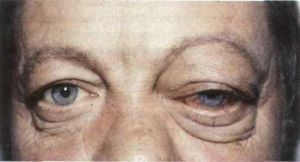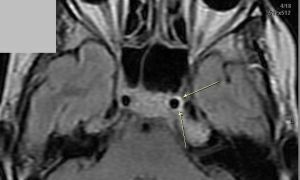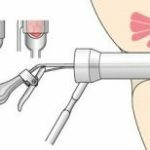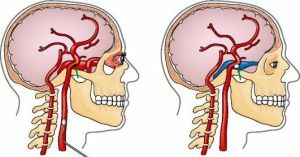 Thrombosis of the cavernous( cavernous) sinus is quite rare( 0.5% of the number of all inflammatory diseases), but at the same time a disease that affects both adults and children is dangerous for life and health.
Thrombosis of the cavernous( cavernous) sinus is quite rare( 0.5% of the number of all inflammatory diseases), but at the same time a disease that affects both adults and children is dangerous for life and health.
Cavernous sinus thrombosis is an occlusion by a thrombus of the cavernous sinus located at the base of the skull on the sides of the Turkish saddle.
The cavernous sinus is responsible for the venous outflow from the orbit and brain, as well as for the regulation of intracranial circulation.
Contents
- Causes of the disease
- Symptoms and signs of the disease
- Diagnosis
- Tactics of treatment
- Possible complications
Causes of the disease
As a rule, thrombosis develops due to inflammatory processes in the body, among which can be distinguished: acute purulent inflammation of the skin around the eyes or nose, spreading to the brain; cardiac or pulmonary insufficiency; is a tumor localized in the brain; removal; cerebral vascular thrombosis;
hemorrhagic cerebral infarction; ischemia, cerebral edema; squeezing of extracranial veins; compression of the veins due to hydrocephalus and craniostenosis; newborn infant suffocation; mastoiditis( an inflammatory process occurring in the mucous lining of the cave and cellular structures of the mastoid process of the temporal bone behind the ear); otitis media( inflammation in the ear); furunculosis( inflammation of the sebaceous gland, hair follicle and surrounding tissue, which is caused by bacteria); of the phlegmon of the orbit( inflammation of the purulent character in the cell spaces). Also in the risk group for the development of thrombosis include women in whose body there were local inflammations after childbirth or abortion.

Symptoms and signs of ailment
The clinic of cavernous sinus thrombosis is quite complex and it is not easy to recognize the disease, because its symptoms may be similar to other diseases.
Among the main signs of the disease can be identified such:
- severe headaches;
- nausea, vomiting, chills;
- loss or confusion;
- coma;
- convulsions;
- pain in the neck when it is bent forward;
- sudden temperature increase;
- exophthalmos( protrusion of the eyeball forward, and occasionally shifting it to the side);
- ophthalmoplegia( paralysis of the eye muscles as a result of damage to the nerves responsible for eye movement);
- edema of the optic disc;
- edema of the eyelids;
- loss of vision;
- decrease or loss of facial sensitivity.
Diagnosis of

In the MRI picture, cavernous sinus thrombosis is indicated by the arrow
. In order to diagnose cavernous sinus thrombosis, the following procedures should be performed:
- blood test for the presence of streptococci and staphylococci, which are the causative agents of the disease;
- bacteriological analysis of fluid samples( mucus, pus) from the pharynx and nose;
- computed tomography of accessory sinuses, brain and eyes;
- magnetic resonance therapy.
Treatment of thrombosis of the cavernous sinus is handled by a neurologist or infectious disease specialist.

What you need to know about ligation of the hemorrhoidal node - how to prepare for surgery and what complications should be prepared.
If Girudoven gel is prescribed for you, then this information will be interesting and useful for you - the pros and cons of the drug, reviews about it and other data.
Treatment Tactics
After the diagnosis of the disease should immediately follow an adequate treatment:
- Initially, the doctor appoints the patient intravenous antibiotics in large doses: nafcillin, oxacillin, cephalosporin III generation.
- If there is no improvement within 24 hours after the administration of antibiotics, surgical intervention can be prescribed - drainage of the sinus.
- The second stage of treatment involves the use of glucocorticoids( dexamethasone) - in the case of a violation of the cranial nerves.
With regard to the use of anticoagulants( drugs that prevent blood clotting and prevent thrombosis), then the opinions of experts differ, because their positive effect on the disease is often completely blocked by side effects.
Possible complications of
Quite often thrombosis of the cavernous sinus leads to such consequences:
Our readers recommend! For the treatment and prevention of varicose veins and hemorrhoids, our readers use the method first voiced by Malysheva. Having carefully studied it, we decided to offer it to your attention. Opinion of doctors. .. "
- blindness;
- stroke - acute circulatory disturbance in the brain, which often leads to disability or death of the patient;
- disrupts the function of the pineal gland( epiphysis), which is responsible for inhibiting the release of growth hormones, slowing the development of tumors, sexual development and behavior.
 Such complications are observed in about 30% of patients.
Such complications are observed in about 30% of patients.
Approximately the same percentage is the mortality rate as a result of this disease.
Often the prognosis for treatment is unfavorable.
So, thrombosis of the cavernous sinus is a dangerous and intractable disease, which in most cases leads to disability, and often even to the death of the patient.
Therefore, in order to avoid this, it is necessary to follow preventive measures designed to prevent the disease: if possible, avoid the formation of inflammatory processes in the body, lead a healthy lifestyle and on time contact the hospital for treatment.
Strict adherence to these requirements will significantly reduce the risk of thrombus formation.
 Thrombosis of the cavernous( cavernous) sinus is quite rare( 0.5% of the number of all inflammatory diseases), but at the same time a disease that affects both adults and children is dangerous for life and health.
Thrombosis of the cavernous( cavernous) sinus is quite rare( 0.5% of the number of all inflammatory diseases), but at the same time a disease that affects both adults and children is dangerous for life and health. 

 What you need to know about ligation of the hemorrhoidal node - how to prepare for surgery and what complications should be prepared.
What you need to know about ligation of the hemorrhoidal node - how to prepare for surgery and what complications should be prepared.  Such complications are observed in about 30% of patients.
Such complications are observed in about 30% of patients. 